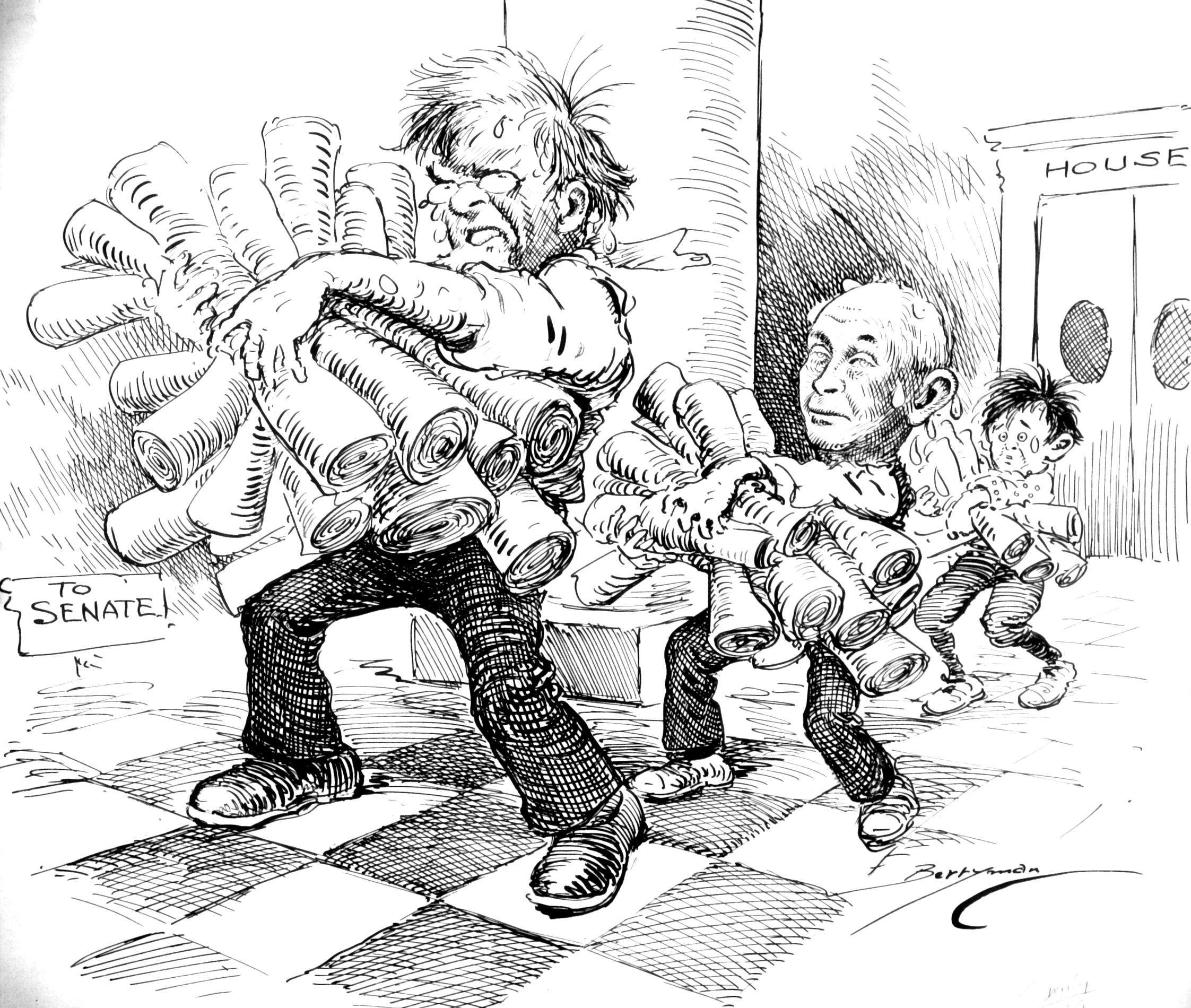A Capitol Hill May Day Parade
5/1/1933
Add to Favorites:
Add all page(s) of this document to activity:

Legislation is formulated in Congress through the steps undertaken independently in the House and Senate. While many bills are proposed in each chamber, far fewer pass both houses and are signed into law. The flurry of activity depicted in this cartoon represents the unusually fast-paced congressional action of the “Hundred Days” that followed the inauguration of President Franklin D. Roosevelt in 1933. President Franklin Roosevelt's first "Hundred Days" were characterized by a flood of legislative proposals designed to alleviate the problems resulting from the Great Depression, namely high unemployment, feeding the hungry millions, restoring business confidence and solving the banking crisis. A busy House has passed a number of bills that are on their way to the Senate. When they arrive, they will begin the legislative process all over again when and if the Senate decides to take them up. Cartoonist Clifford Berryman captures the frenzy of the "Hundred Days" as several legislators and a page, loaded with new legislation, sweat as they trudge from the House to the Senate.
This cartoon was drawn by Clifford Berryman, one of Washington, DC's best-known cartoonists in the early to mid-1900s. Berryman drew for the Washington Post and Evening Star newspapers. His cartoons touched on a variety of subjects including politics, elections, and both World Wars.
This cartoon was drawn by Clifford Berryman, one of Washington, DC's best-known cartoonists in the early to mid-1900s. Berryman drew for the Washington Post and Evening Star newspapers. His cartoons touched on a variety of subjects including politics, elections, and both World Wars.
This primary source comes from the Records of the U.S. Senate, 1789 - 2015.
National Archives Identifier: 6012137
Full Citation: A Capitol Hill May Day Parade; 5/1/1933; (E-077); Berryman Political Cartoon Collection, 1896 - 1949; Records of the U.S. Senate, 1789 - 2015, Record Group 46; National Archives Building, Washington, DC. [Online Version, https://docsteach.org/documents/document/capitol-hill-may-day-parade, April 18, 2024]Rights: Public Domain, Free of Known Copyright Restrictions. Learn more on our privacy and legal page.



